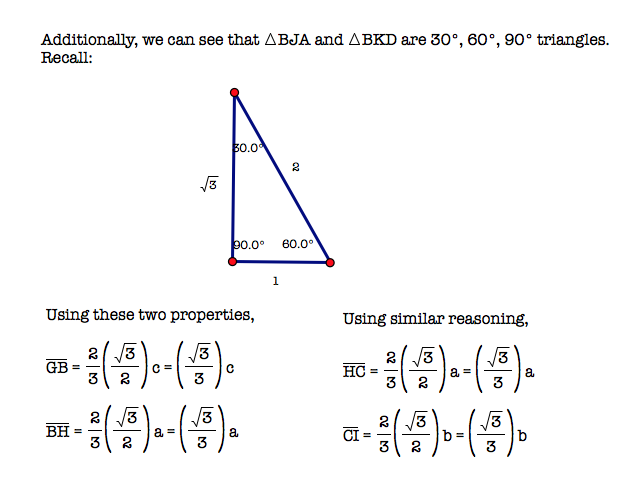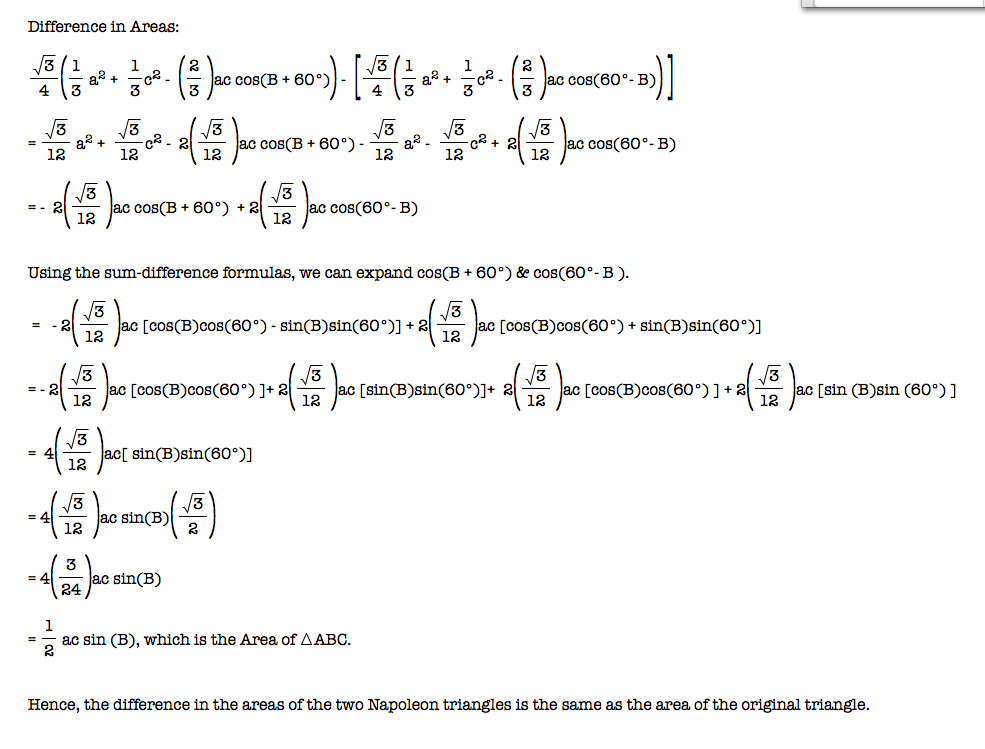

Given any triangle ABC, construct equilateral triangles on each side and find the center of each equilateral triangle. The triangle formed by these three centers is Napoleon's Triangle. This is a GSP sketch. To be explored:
Open up this GSP Sketch of Napoleon's Triangle. Use the measuring tool to measure the side lengths of Napoleon’s Triangle, ΔGHI. Grab one of the vertices of ΔABC and observe what happens to the side lengths of ΔGHI. We see that the side lengths of ΔGHI are congruent and Napoleon’s Triangle is equilateral. Now, lets see if we can prove this.

Looking at ΔGBH, I noticed that I could apply the Law of Cosines to ΔGBH. I decided to algebraically prove Napoleon's Triangle is equilateral. However, this can be proven geometrically as well. How do you think we would go about proving this geometrically? We will discuss the geometric proof later in the essay.

By showing that
we show that i = g. Notice that the two triangles below, ΔABE & ΔACE, share a side length. These triangles are also made up of side lengths a, b, & c, and containe angle measures (B + 60) and (C + 60). These are the side lengths and angle measures that make up
.
Lets us the Law of Cosines to find AE for ΔABE & ΔACE.
There are two Napoleon triangles, one with the equilateral triangles constructed outward and one with the equilateral triangles constructed inward. In the previous exploration, we worked with the Napoleon Triangle that was constructed using outward facing equilateral triangles. We found that Napoleon's Triangle was equilateral. This property holds for the Napoleon Triangle that is constructed using inward equilateral triangles as well.
Open up this GSP Sketch of the two Napoleon Triangles. Notice that no matter how we move ΔABC, the differnce in the area of the two triangles is always equal to the area of the original triangle.
We can go ahead and calculate the area of the Exterior Napoleon Triangle since we know the value of i.
Now lets use the Law of Cosines to calculate the area of the Interior Napoleon Triangle. I found that it was easier to follow the steps I completed in the previous exploration if I manipulated my GSP sketch of the exterior Napoleon Triangle so that it represented the Interior Napoleon Triangle.
We can now calculate the area of the Interior Napoleon Triangle since we know the value of i.

I labeled the intersection of these lines J.
Point J is known as Fermat's Point. We will discuss Fermat's Point later in the essay.

